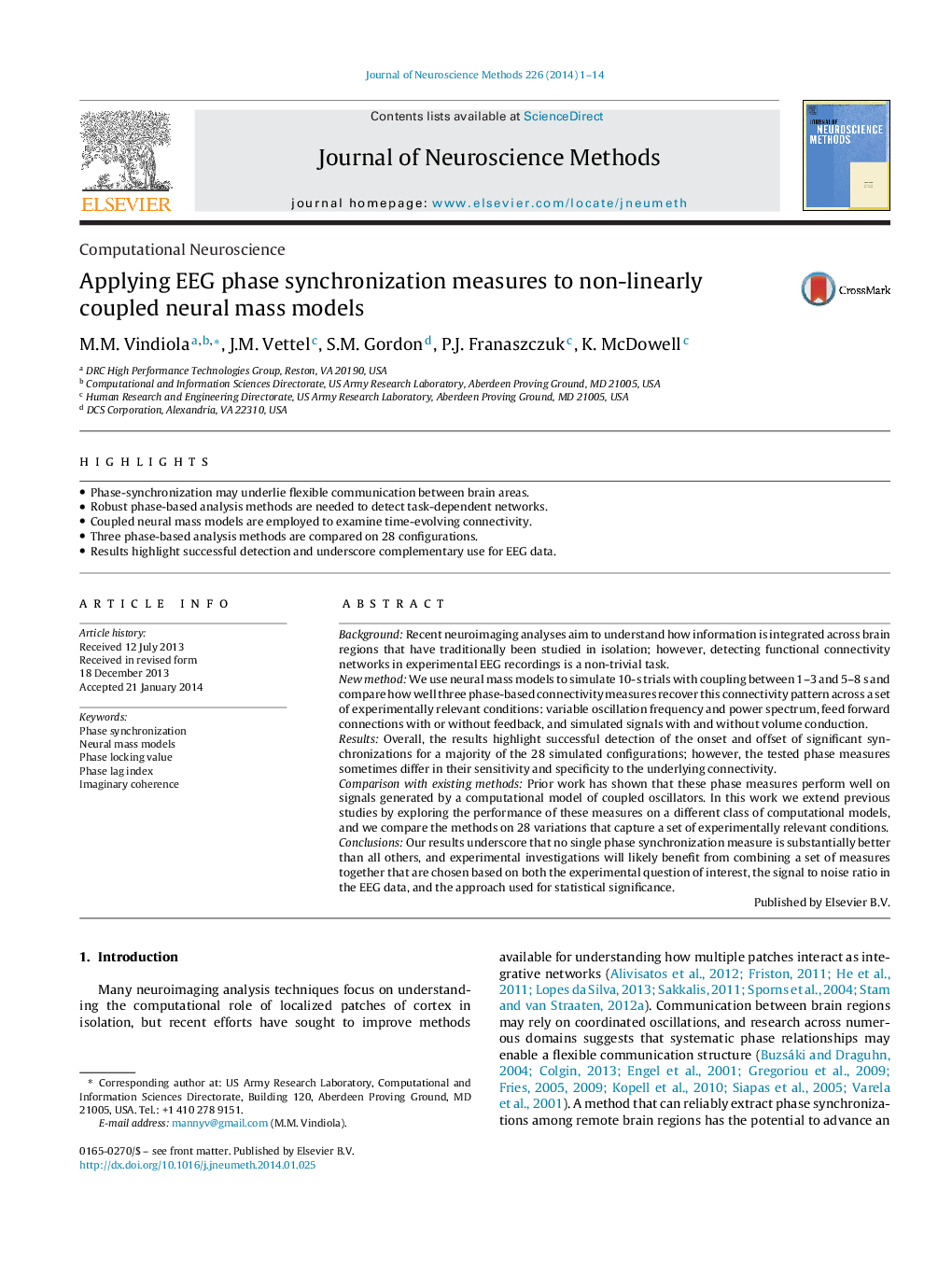| کد مقاله | کد نشریه | سال انتشار | مقاله انگلیسی | نسخه تمام متن |
|---|---|---|---|---|
| 6268851 | 1614643 | 2014 | 14 صفحه PDF | دانلود رایگان |

- Phase-synchronization may underlie flexible communication between brain areas.
- Robust phase-based analysis methods are needed to detect task-dependent networks.
- Coupled neural mass models are employed to examine time-evolving connectivity.
- Three phase-based analysis methods are compared on 28 configurations.
- Results highlight successful detection and underscore complementary use for EEG data.
BackgroundRecent neuroimaging analyses aim to understand how information is integrated across brain regions that have traditionally been studied in isolation; however, detecting functional connectivity networks in experimental EEG recordings is a non-trivial task.New methodWe use neural mass models to simulate 10-s trials with coupling between 1-3 and 5-8Â s and compare how well three phase-based connectivity measures recover this connectivity pattern across a set of experimentally relevant conditions: variable oscillation frequency and power spectrum, feed forward connections with or without feedback, and simulated signals with and without volume conduction.ResultsOverall, the results highlight successful detection of the onset and offset of significant synchronizations for a majority of the 28 simulated configurations; however, the tested phase measures sometimes differ in their sensitivity and specificity to the underlying connectivity.Comparison with existing methodsPrior work has shown that these phase measures perform well on signals generated by a computational model of coupled oscillators. In this work we extend previous studies by exploring the performance of these measures on a different class of computational models, and we compare the methods on 28 variations that capture a set of experimentally relevant conditions.ConclusionsOur results underscore that no single phase synchronization measure is substantially better than all others, and experimental investigations will likely benefit from combining a set of measures together that are chosen based on both the experimental question of interest, the signal to noise ratio in the EEG data, and the approach used for statistical significance.
Journal: Journal of Neuroscience Methods - Volume 226, 15 April 2014, Pages 1-14